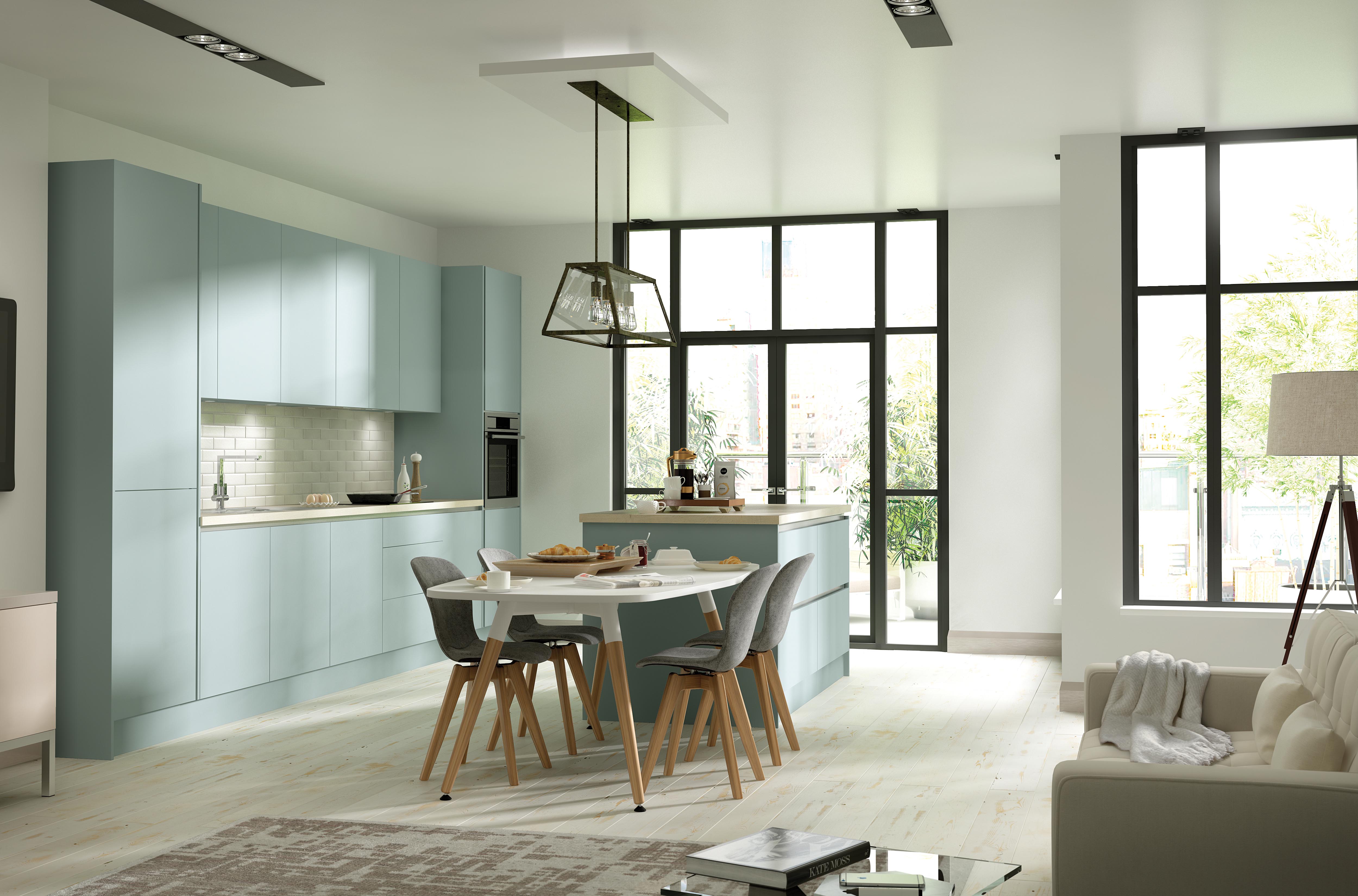Sustainable domestic kitchens
Contents |
[edit] Introduction
It is increasingly important for housebuilders to specify products that help meet the strict industry sustainability regulations and comply with standards such as the Code for Sustainable Homes. Complete kitchens that help meet, or exceed, sustainability requirements are therefore becoming an increasingly popular choice.
[edit] How can a kitchen be sustainable?
There are a number of ways a kitchen can be classed as sustainable from material choice, through to manufacturing processes and the supply chain. Companies that use locally-sourced materials and manufacture the entire kitchen on site reduce the product’s carbon footprint, eliminating the need for long transportation processes.
In addition there may be processes set up to optimise material and reduce waste.
A sustainable supply chain solution does not have to mean a compromise on overall product production or performance. Some kitchens use MFC (Melamine Faced Chipboard) doors - the MFC contains a high proportion of recycled material such as chipboard waste which is sent back to the manufacturer for recycling. The end result can be a stylish but sustainable product solution that appeals to both the end home owner and housebuilder with minimal wastage.
[edit] Accreditation and third-party endorsement
Another simple way ensure a manufacturer is producing high quality and sustainable product choices is to look out for brands and products which are FSC and FIRA accredited. This means the housebuilder can rest assured they are choosing a product that has passed rigorous testing procedures, such as ergonomic assessment and structural performance, and is also kind to the environment.
Look out for further credentials too, such as brands that are certified under BS EN ISO 14001: 2015 environmental management systems. This ensures that the companies adhere to strict regulations and help to set the standard for environmental management across the globe.
There is also increasing demand for products that are BREEAM tested which can significantly add to the number of credits in the Code for Sustainable homes. For example, a kitchen range manufactured in the UK, designed to reduce, re-use and re-cycle, is responsibly sourced and reviewed by a BREEAM assessor, contributes 17 credits to the Code.
[edit] Sustainability through longevity
Kitchens that are designed with longevity in mind also provide a sustainable solution for the housebuilder and an attractive feature for the home owner. They require less maintenance and do not need to be replaced for years.
Special features to help ensure a long kitchen lifespan includes a timeless design that can evolve, reducing the need to replace. The sustainable features and manufacturing process does not compromise on the overall design of the kitchen. Sophisticated manufacturers will subtly integrate these processes so that home owners can still enjoy an on-trend space in their home with the extra design touches the buyer expects. For example, clever storage solutions, integrated lighting and eye catching finishes.
Choosing a sustainable kitchen benefits all parties and with the number of environmentally conscious processes now available, it has never been easier to meet the required credits and regulations.
[edit] Related articles on Designing Buildings Wiki
Featured articles and news
Government consultations for the summer of 2025
A year of Labour, past and present consultations on the environment, the built environment, training and tax.
CMA competitiveness probe of major housing developers
100 million affordable housing contributions committed with further consultation published.
Homes England supports Greencore Homes
42 new build affordable sustainable homes in Oxfordshire.
Zero carbon social housing: unlocking brownfield potential
Seven ZEDpod strategies for brownfield housing success.
CIOB report; a blueprint for SDGs and the built environment
Pairing the Sustainable Development Goals with projects.
Types, tests, standards and fires relating to external cladding
Brief descriptions with an extensive list of fires for review.
Latest Build UK Building Safety Regime explainer published
Key elements in one short, now updated document.
UKGBC launch the UK Climate Resilience Roadmap
First guidance of its kind on direct climate impacts for the built environment and how it can adapt.
CLC Health, Safety and Wellbeing Strategy 2025
Launched by the Minister for Industry to look at fatalities on site, improving mental health and other issues.
One of the most impressive Victorian architects. Book review.
Common Assessment Standard now with building safety
New CAS update now includes mandatory building safety questions.
RTPI leader to become new CIOB Chief Executive Officer
Dr Victoria Hills MRTPI, FICE to take over after Caroline Gumble’s departure.
Social and affordable housing, a long term plan for delivery
The “Delivering a Decade of Renewal for Social and Affordable Housing” strategy sets out future path.
A change to adoptive architecture
Effects of global weather warming on architectural detailing, material choice and human interaction.
The proposed publicly owned and backed subsidiary of Homes England, to facilitate new homes.
How big is the problem and what can we do to mitigate the effects?
Overheating guidance and tools for building designers
A number of cool guides to help with the heat.
The UK's Modern Industrial Strategy: A 10 year plan
Previous consultation criticism, current key elements and general support with some persisting reservations.
Building Safety Regulator reforms
New roles, new staff and a new fast track service pave the way for a single construction regulator.

























